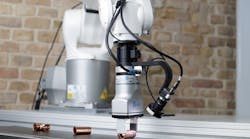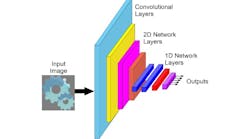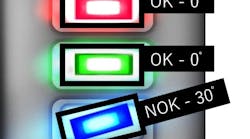Given all the fears and forecasts about what might happen with the introduction of new technology, it sometimes seems that because change occurs so slowly, we are left wondering what all the fuss was about. This is especially true in machine vision, because it is closely tied to established industrial and manufacturing processes, procedures, and standards.
So it is exciting when new technologies and products appear. This will be case at The Vision Show East, held in the Hynes Convention Center in Boston, MA, May 9-11. Following the recent burst in development of Gigabit Ethernet cameras by numerous vendors, the show promises to be an “arrival” party, where camera vendors will display numerous incarnations of Gigabit Ethernet products just as the Automated Imaging Association (AIA) readies the final draft of the GigE Vision Standard.
In this issue, we focus on such Gigabit Ethernet developments with an article by editor Andy Wilson on how camera vendors may adopt the GigE Vision Standard and the different design decisions and compromises they are making. He also looks at how GigE Vision fits with the European Machine Vision Association’s GenICam and 1288 standards and the challenges faced by system integrators. For more on these developments, Eric Carey, manager of smart products at Dalsa Coreco and chair of the AIA GigE Vision Standard committee will present our third Webcast entitledGigE: Gift or Gimmick?, which will be broadcast live on April 25 and archived on our Web site.
Gigabit Ethernet machine vision is not the only new technology facing change. Over the past 30 years, barcodes have evolved from UPC symbols on consumer items to sophisticated graphic symbols such as the 2-D Data Matrix code used to track electronic and semiconductor devices, including the LCD glass panel depicted on the cover. Our feature article on new barcode symbologies and delivery mechanisms shows that new thinking about the design of vision systems for barcode reading may be required, especially when the barcodes contain proprietary information, mark food, or encode information at a molecular scale.
Showing how these machine-vision and image-processing products and technologies are designed into industrial systems is the primary mission ofVision Systems Design. This issue contains numerous examples-from systems that inspect beverage cans to those that guide lumber production and test automotive parts with infrared imaging.
In addition to The Vision Show East, other forthcoming trade shows will highlight the use of machine vision and image processing. While the Defense & Security Symposium in Orlando, FL (April 18-20) is primarily targeted toward defense applications, Automatica in Munich, Germany (May 16-19) will bring together robotics, industrial automation, and machine-vision equipment vendors. The technologies and products shown will no doubt impact the face of future image processing and machine-vision systems, and attending these shows may alter your perspective on the speed of change in the machine-vision industry.
W. Conard Holton
Editor in Chief
[email protected]






